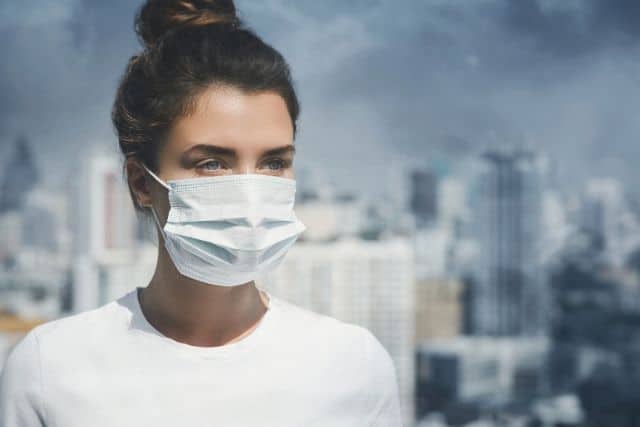India, the second-most populated nation and home to 21 of the world’s 30 most polluted cities, recently witnessed a dramatic drop in air pollution levels as the country endures the second week of a 21-day COVID-19 lockdown announced by the Government to stop spreading of novel coronavirus, according to The Weather Channel.
India’s economy has completely shut down to stop the spread of deadly COVID-19. However, its additional health benefit is the clearer air that the population in millions was choking on, according to CNN. As vehicles are off the road, construction is on hold, and production has been stopped in the factories, the microscopic PM 2.5 levels started to drop significantly.
“It is true that pollution levels are going down and will continue to be lower as a result of lockdown,” Pawan Gupta, senior scientist at the Earth Sciences of Universities Space Research Association at NASA’s Marshall Space Flight Center, told Earther in an email.
Recently, in the north and west of the country, it was pouring heavily, which has also helped the country’s pollution levels, Gupta added. “Rain is a very effective aerosol removal process from the atmosphere and can bring down particulate matter values,” he said.
New Delhi’s air quality, which is usually the worst in the world, has dropped to “satisfactory” levels as the lockdown forced 1.3 billion Indians to stay home since March 25. The lockdown has ordered shut down of schools, offices, movie theaters, shopping malls, and markets and includes all “non-essential” services. Every mode of public transport, including inter-state and local trains, metro trains, buses, domestic and international flights, has also been stopped, according to Quartz.
The dramatic effect of the lockdown has been noticed. In New Delhi, where flights used to be diverted because of the smog shrouded airport, the air pollution levels have dropped 71 percent in just a single week. On March 20, the air which had an unhealthy 91 micrograms per cubic meter of PM2.5 fell to 26 micrograms per cubic meter on March 27 within just a few days into the lockdown. According to the World Health Organization (WHO), anything above 25 is considered unsafe, as CNN reported.
“I have not seen such blue skies in Delhi for the past 10 years,” said Jyoti Pande Lavakare, the co-founder of Indian environmental organization Care for Air, and author of upcoming book Breathing Here is Injurious To Your Health, to CNN. “It is a silver lining in terms of this awful crisis that we can step outside and breathe.”
The nitrogen dioxide levels reduced by 71 percent as per the data from the Central Pollution Control Board of India’s Environment Ministry. A drop in air pollutants is also recorded in Mumbai, Chennai, Kolkata, and Bangalore, according to CNN. In the financial capital Mumbai, air quality levels in March 2019 averaged 153 on the Air Quality Index, which is unhealthy to breathe, according to Reuters. New Delhi averaged 161 last March.
The top floors of skyscrapers were visible, and some residents told Reuters that they could spot more stars than usual.
“The air quality is likely to slip into ‘good’ category soon. It is due to reduced vehicular traffic and rise in temperature,” said Kuldeep Srivastava, who heads the regional meteorological center at the Indian Meteorological Department to The Weather Channel.
However, this is a temporary respite and it is to remember that industry and vehicular traffic will return once the lockdown is over.
To know its effect on the climate crisis, The Weather Channel reported that the World Meteorological Organization issued a statement that read: “Efforts to control the coronavirus pandemic have reduced economic activity and led to localized improvements in the air quality. But it is too early to assess the implications for concentrations of greenhouse gases, which are responsible for long-term climate change.”






